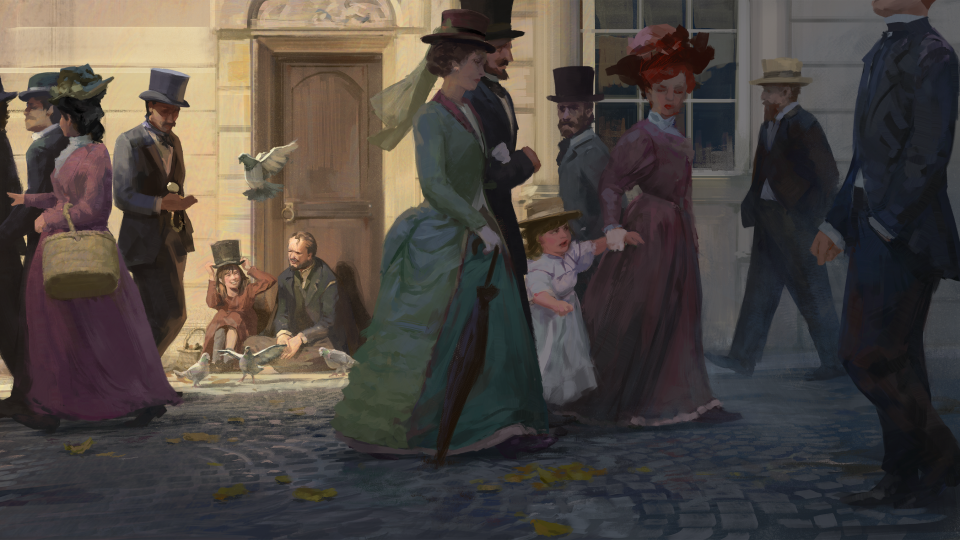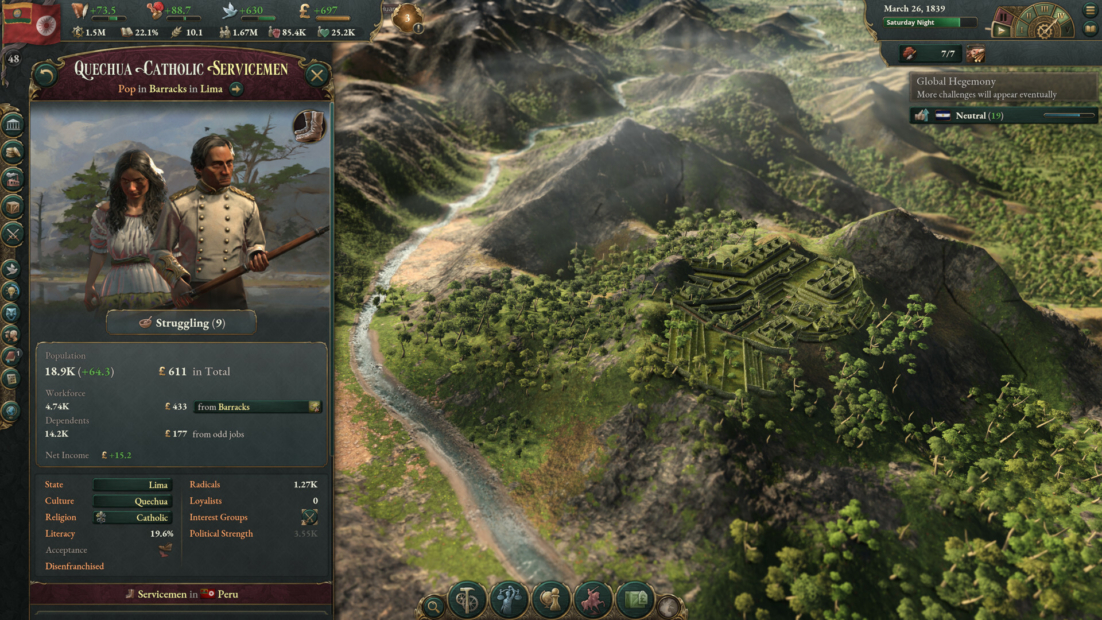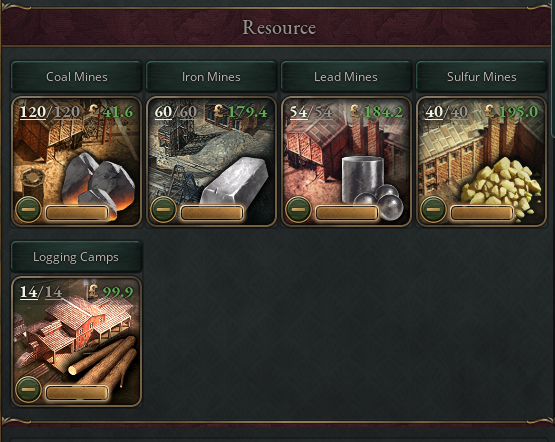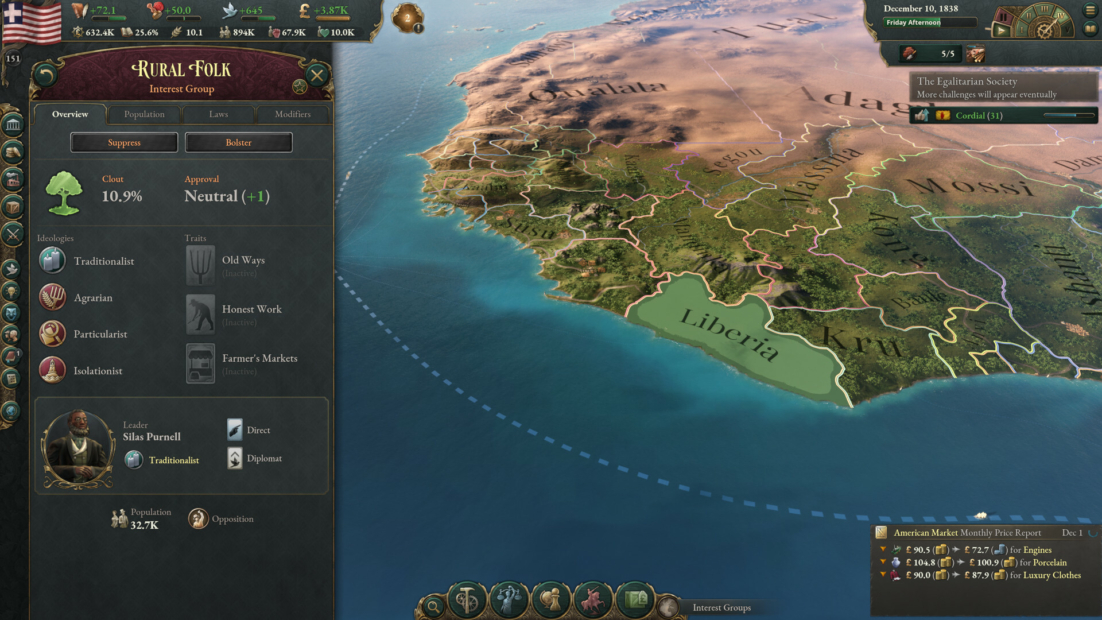After 12 years of waiting, the long-awaited successor to Victoria 2 has finally been released and is even more complex than its predecessor. In our Victoria 3 beginner’s guide, we’ll show you how to create a powerful empire from your starting nation and use the developments of the Industrial Revolution to your advantage
Table of Contents
1) Familiarize yourself with the population
Your population in Victoria 3 consists of so-called Pops. You can find out how they are divided by clicking the “Population” button in the left bar and then going to “Detailed list.” There, you can see what religion the pop belongs to, what culture it has, to which state it belongs, and what kind of work it does.
Depending on the standard of living, the Pops have different needs. The living standards range from “impoverished” to “rich.” Depending on the social class, the groups aim for a low or high standard of living. Aristocrats, for example, will be highly dissatisfied if they are not at least “tolerable.” Ideally, you keep them at the “well-off” level.

As for classes, you can roughly divide your population into three categories. Farmers, machinists, and simple workers belong to the lower class. Engineers, clergy, bureaucrats, and academics are middle class, and aristocrats and capitalists are upper class.
If your Pops are satisfied, they multiply and grow. However, if dissatisfaction spreads, it can lead to riots and revolts. It’s therefore important to satisfy the needs of your pops. You can find out what these are by unfolding the respective pop in the “detailed list” and hovering the mouse over “standard of living.” A tooltip will appear when you click on it, and you go to “Prosperity.” There, you hover your mouse over the number next to it. In the open tooltip, click “weekly expenses” and search for “needs.”
Next to each need in Victoria 3, there’s a red number. Hovering your mouse over it will open another tooltip that tells you how much money the pop spends weekly on each category. To get a breakdown of the categories, hover your mouse over them and see what goods the pop would like and how much it spends per good.

As mentioned above, a Pop’s profession determines their position in society. But it’s also relevant for your economy. For example, it affects the tax rate and influences wages, your trade routes, and the interest groups you support. Over time, professions can change, for example, as old ones become irrelevant and new ones emerge. After all, Victoria 3 realistically recreates the history of the world, and while physical labor is still in high demand in the 19th century, this changes with industrialization.
Also important are the “obsessions” and “taboos” of your pops. These are mainly dependent on their religion or their culture. For example, Far Eastern countries are often addicted to opium, and Muslim cultures abstain from alcohol or pork.
When there’s an obsession, the pop in Victoria 3 tends to preferentially consume the particular good. Even when the price is enormously high. With taboos, the opposite is true. These goods are avoided by the pop even if the price is cheap.
So, you should focus on keeping the goods your people depend on cheap and neglecting the taboos. Missing goods can be imported through trade. In the long run, however, your production is the better and more independent alternative. More about this in the next tip.
2) Victoria 3 tips on goods and resources

Goods and resources have three different uses. First, they are used for further processing in factories and manufactories to produce higher quality goods, and second, they are consumed by your population. The third purpose is trade. Because every product can also be sold profitably on the market.
It’s essential to create a good balance of goods in Victoria 3. If your manufacturing buildings are not sufficiently supplied, this not only affects their productivity but also lowers the wages of the workforce and, ultimately, the standard of living of the pop to which they belong. This, in turn, causes employees to leave, and any trade routes can no longer be served.
So, keep both the supply of the factories with the necessary raw materials and the supply of your pops with their necessities under control. As a rule, your task is to ensure a sufficient supply. However, if production is too good, the opposite can happen – an oversupply of goods.
At first, this sounds like a luxury problem, but it causes the prices of the overproduced goods to drop, and your factories can no longer make a profit. As with undersupply, this results in lower wages and, thus, a lower standard of living for your pops. So, the keyword of our Victoria 3 beginner tips for this is balance. Your society can flourish only when all goods are balanced according to their demands.
3) Exploit natural resources
On your world map in Victoria 3, you can see the resource potential of each area. This indicates which natural resources can be mined or cultivated. For example, in the flat regions of Europe, you can profitably cultivate crops, while in the mountains, you can find gold deposits. You should adapt your production and supply chains to the resource potential to be as efficient as possible.

When you click on a mineable resource in Victoria 3, you’ll see all its information. Thus, you can determine which and how many buildings you must construct for extraction. For smooth mining, the corresponding research level is also necessary. But more on that later.
4) Don’t expand too fast
As in any strategy game, expansion is essential and your primary goal in Victoria 3. But as with the production of goods, the most crucial thing in our beginner’s guide is balance. Consider carefully whether you can absorb a neighboring state into your empire via diplomacy or war. Especially after a conquest, the country is in turmoil for a few years and needs intensive care.
In matters of politics, proceed with caution and let your sphere of power grow steadily, but not too quickly. You should consider a war or forging an alliance only when the situation in your controlled countries is stable.
5) Victoria 3 beginner’s guide: Tips on buildings
Buildings are the engine of your economy in Victoria 3. They produce goods and give work to your population. Each building needs a workforce that consists of different professions. Only if all of these professions are carried out is productivity guaranteed. The biggest cost factor and, at the same time, wealth creator for the people is the wage your workers receive.
Buildings can produce effects such as bureaucracy, convoys, and infrastructure. Their production processes determine their function, and their efficiency is influenced by their level. They can be upgraded both manually and automatically. For each upgrade in Victoria 3, there must be enough money to make it happen. The bigger your construction sector is, the more buildings you can construct simultaneously.
The construction sector includes fleets, construction offices, and equipment. But again, don’t expand too quickly. Because a large construction sector swallows a lot of resources. Over time, you’ll get a feel for anticipating construction needs and planning accordingly.
6) Pass laws
As in any global strategy game from Paradox, passing laws is integral to Victoria 3. Go to the “Politics” section and click the “Laws” tab to do this. You’ll find an overview of what’s currently available and can be passed there. You should check the list regularly, as it changes frequently and new laws are added all the time.

Before you implement a law, you must first look at the likelihood of its approval. Hover your cursor over the decree to see which demographic group will approve and which will disapprove. You don’t need to push unpopular laws because they won’t pass anyway and will diminish your authority.
By passing sensible laws, you can strengthen your research and economy and improve your society internally. At best, your decrees align with your people’s interests. Note, however, that laws also affect international diplomacy and are either approved or criticized by other empires. So, consider the consequences of your legislation and weigh the pros and cons.
7) Research & Technology Tree
A prosperous empire needs a good, inventive spirit. To expand your research tree quickly, you must ensure a high literacy rate among your people and produce as many academics as possible. This requires sufficient universities and, at best, free education for students.
In Victoria 3, the technology tree is composed of three parts: Production, Military, and Society. While the former unlocks new production methods for your buildings and new blueprints, military technology improves the buildings of your armies and the capabilities of your warfare. In the case of social technology, new laws become possible through research.

At best, you strive for an even distribution of the three areas, although your play style can shift the focus somewhat. If you focus on diplomacy, you have to do more research in social technology, and if you are keener on wars, military technology is your domain. It also depends on the starting nation you choose which of the three areas you should pay attention to first.
While a large empire is initially superior in war, smaller empires must be diplomatically adept. The levels of technology depend on the era you are in. These range from 1836 to 1935, and each newly acquired technology affects the entire country. Acquisition requires both money and “innovation.” The latter is provided by universities.
Build your ideal society with PLITCH!
The new Paradox game is more detailed than its two predecessors and is a lot of fun. Thanks to our Victoria 3 beginner’s tips, getting started shouldn’t be too difficult. Nevertheless, building a powerful empire is enormously time-consuming and a state bankruptcy or political upheaval can destroy your painstakingly achieved progress within minutes.
To prevent this and to increase the fun of the game, you can use PLITCH’s Victoria 3 cheats. For example, increase the research speed to unlock new technologies faster or ensure better loyalty of your subjects to prevent revolutions. You can also increase your gold reserves at the push of a button to avoid bankruptcy.
To learn more about PLITCH, check out this blog and our YouTube channel!
Happy Gaming!